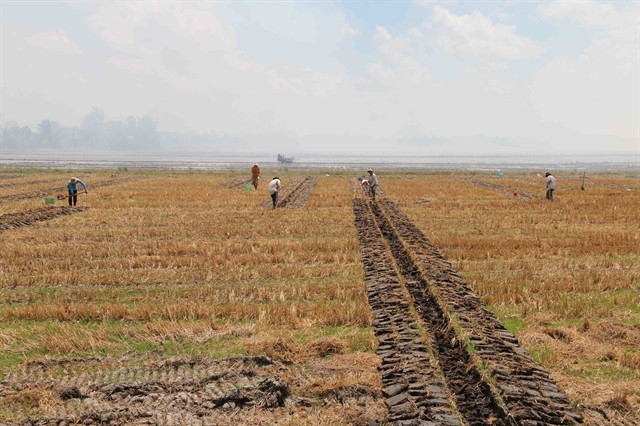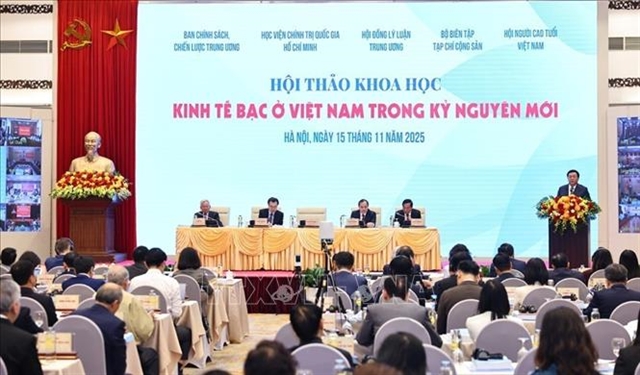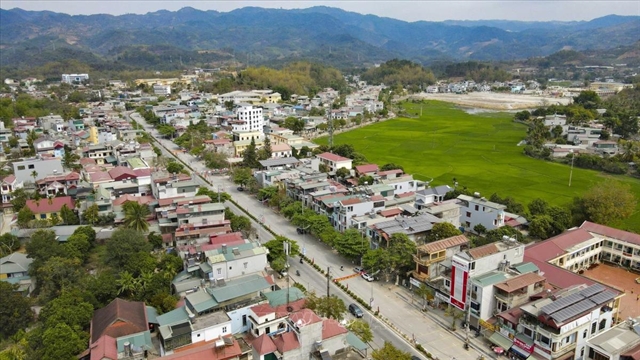 Society
Society

The Cửu Long (Mekong) Delta province of Trà Vinh is speeding up dredging of 14 main irrigation canals with a total length of 125.3 km and expects to complete the work early next month.

|
| Farmers prepare land to grow vegetables in former rice paddies in Trà Vinh Province’s Cầu Kè District. The province encourages farmers to switch to other crops on unproductive rice fields to improve their incomes. — VNA/VNS Photo Thanh Hoà |
TRÀ VINH — The Cửu Long (Mekong) Delta province of Trà Vinh is speeding up dredging of 14 main irrigation canals with a total length of 125.3 km and expects to complete the work early next month.
Phạm Minh Truyền, director of the province Department of Agriculture and Rural Development, said the canals are in Châu Thành, Cầu Ngang, Tiểu Cần, Cầu Kè, and Trà Cú districts and the work would cost more than VNĐ90 billion (US$3.9 million).
They have bed widths of 3-12 metres and depths of 1.5 – 3 metres, and irrigate rice and vegetable fields and fruit orchards.
Nguyễn Trung Hoàng, deputy chairman of the province People’s Committee, said while the province has great potential for farming high-value crops, animals and seafood, insufficient infrastructure for agriculture and the impacts of climate change, including drought and saltwater intrusion mean the farm economy has yet to achieve its potential.
In 2021 – 25, besides prioritising dredging of irrigation canals and expanding irrigation systems, the province also plans to invest another VNĐ3.42 trillion ($149.3 million) in 50 agricultural infrastructure projects.
Trà Vinh plans to achieve agricultural production of VNĐ28.2 trillion ($1.23 billion) this year, a 3.5 per cent increase from last year, according to the department, producing one million tonnes of paddy and 260,000 tonnes of fruits.
It will also grow more than 51,650ha of vegetables and short-term cash crops.
In 2021- 25 it also targets switching to other crops on 8,084ha of unproductive rice fields or rotating between rice and aquatic species.
This year it encourages farmers to convert 1,550ha, thus increasing the total area under vegetables and other non-rice crops to 51,000ha.
Truyền, director of the agriculture department, said since 2017 10,647ha have been converted.
The switch has helped farmers increase their incomes by 1.2 – 7.6 times, he said.
The area under rice might have reduced but not output since farmers use advanced techniques, machinery and high-quality rice seeds, which has helped increase yield and quality.
The province plans to grow 200,000ha of rice with an average output of 1 – 1.2 million tonnes a year in 2025-30.
They include 2,000 -3,000ha of organic rice and 20,000 – 30,000ha of clean rice.
Authorities will encourage rice farmers to adopt Vietnamese good agricultural practices (VietGAP) standards, improve the efficiency of fertiliser use and reduce the use of pesticides and other chemicals to cut production costs, improve rice quality and food safety, and protect the environment, according to the department.
More new rice varieties with higher yields and quality and meeting export requirements will be grown.
Farmers are encouraged to use certified seeds.
In 2021 – 25 the province will also link up companies, co-operatives and individual farmers to ensure rice grown on a total of 4,850ha secures outlets.
It plans to restructure the number of rice crops grown in a year based on the conditions in each locality and their schedules to adapt to the impacts of climate change.
It plans to have 20,000ha of fruit orchards by 2025 and farmers earning an average income of VNĐ170 million ($7,400) per hectare per year.
The province grows grapefruit, orange, mango, rambutan, coconut, and others.
It is calling on investors to invest in producing high-quality fruit seedlings, making products from fruits and exporting fresh fruit and fruit-related products. — VNS




